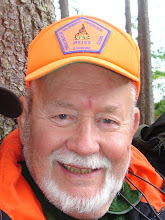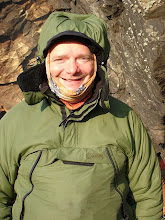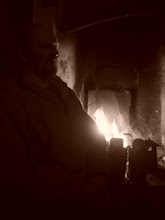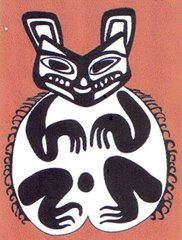
Everyone needs inspiration once in awhile, for many of us people like Eddie McGee or Jack Hargraves were childhood friends and guru's.
For the modern 'shrafter' its more likely to be Ray Mears but somewhere in between - shrouded in the mists of time is Les Hiddens aka the Bushtucker man, unknown by some and half forgotten by others.
Each inspiration has their own strength and credit is due to them all, Eddie McGee and Loft Wiseman both inspired me as a soldier to explore the fields of Military Survival and E&E skills, Jakc Hargraves was a countryman and inspired me to seek out and enjoy the countryside as a entity in its own right and Ray Mears was a inspiration, teacher and friend who taught me much about Bushcraft as a subject and the teaching of it.
All these people had shaped me and, I suspect, each other and many of you too - yet I cant help but feel somewhere along the line we, as bushcrafters, have lost sight of the goal!
We've drifted away from way 'shrafting' was meant to be and become to obsessed with the modern buy culture! Each 'character' leads us to new wants - Lofty was the survival Tin, Ray a woodlore knife and a swanni for example..........but is bushcraft about kit or how we use it?
Buying into the dream is one thing, buying the best kit you can afford to enhance your experience is another but buying kit for kits sake, for the label for the brand surely isnt what bushcraft is about?
To my mind at least bushcraft is about being one with nature, learning to utilize natures bounty, learning to improvise, learning to become a modern Aborigine or a modern hunter gatherer ........................its not about wrapping oneself in a artificual shell that cuts you off from the winds cool caress or carrying a stove and full field kitchen to ensure one has their favourite gluten or meat free whatever ........how can you be part of the enviroment if you cut yourself off from it or try to impose your own 'learnt' social prejudises on it - remember Nature doesnt do PC!!
Well if that is the case, if the guru's have lead us into the commercial quagmire then I have to say, half forgotten until recently, lays the Bushtucker man. I can remember watching his series on TV back in the 90's long before Mr Mears had his TV break with Tracks Major Les Hiddins was showing us how to do things bushway!! And i was lucky enough to see a few episodes of his series a few days ago and I sat their enthralled.
The things that impressed me so much were his presence on screen, he talks to the viewer like your were a friend, no arrogance no condescending tone and also his kit, no flashy brand names, no expensive gear just plain simple clothing and we'll used or improvised tools. In todays climate of TV and media power Les' whole show like a trip back in time to a simpler age.
And as mentioned above this got me thinking, and I hope it will you to!
What is bushcraft? Have we lost the path, have we forgotten what it is, what it was supposed to be?
If Bushcraft is not the destination but the path - what is the destination? Is it a shed full of gear and a armoury of cutting tool to equal any dark age warlords arsenal? Or is it the ability, with very little gear to enter into the nature and become, if not a part of it, at least comfortable?
What happened to carry less by knowing more?
I can remember a time when the goal of every wanna be 'shrafter' was to be free of all the gear and clutter - a knife and billy can and a blanket withthe skills to provide everytihing else was our dream!!
Watching, rediscovering the Bush tucker man has been a breathe of fresh air for me. I am out doing or teaching bushcraft all year and personally I hadnt realsied how much I had become gear orientated myself. Its a bad habit and one I will now stop and turn around, seeking to once again simplify.
The knife may now be a Wilderness knife , the billy a swedish army mess kit not a old commerical bean tin, and the blanket may now be a Whitby or hudson bay not one liberated from Nans airer but the journey and the rediscovery will still be the same - all thanks to Les Hiddins the Bush tucker man!!
http://www.youtube.com/watch?v=6mMm6MPEgFk&feature=related maybe this little taster will help you understand or wet your appetite!!








































 So why not look at something simpler - a hexi stove or a Tommy cooker as their known for example these are cheap - the fuel blocks can be used as tinder for fire lighting as we'll as with the stove and once used their no rubbish to carry out.
So why not look at something simpler - a hexi stove or a Tommy cooker as their known for example these are cheap - the fuel blocks can be used as tinder for fire lighting as we'll as with the stove and once used their no rubbish to carry out.






















